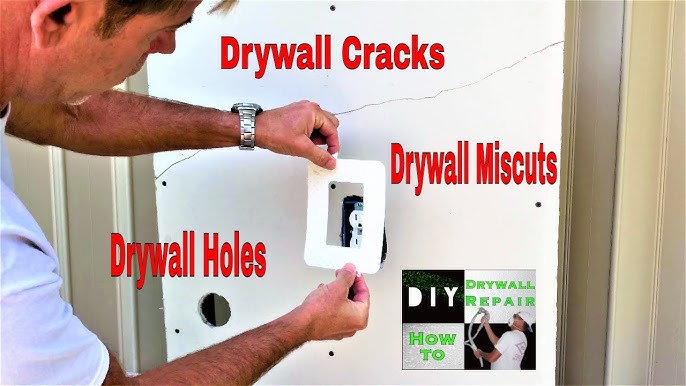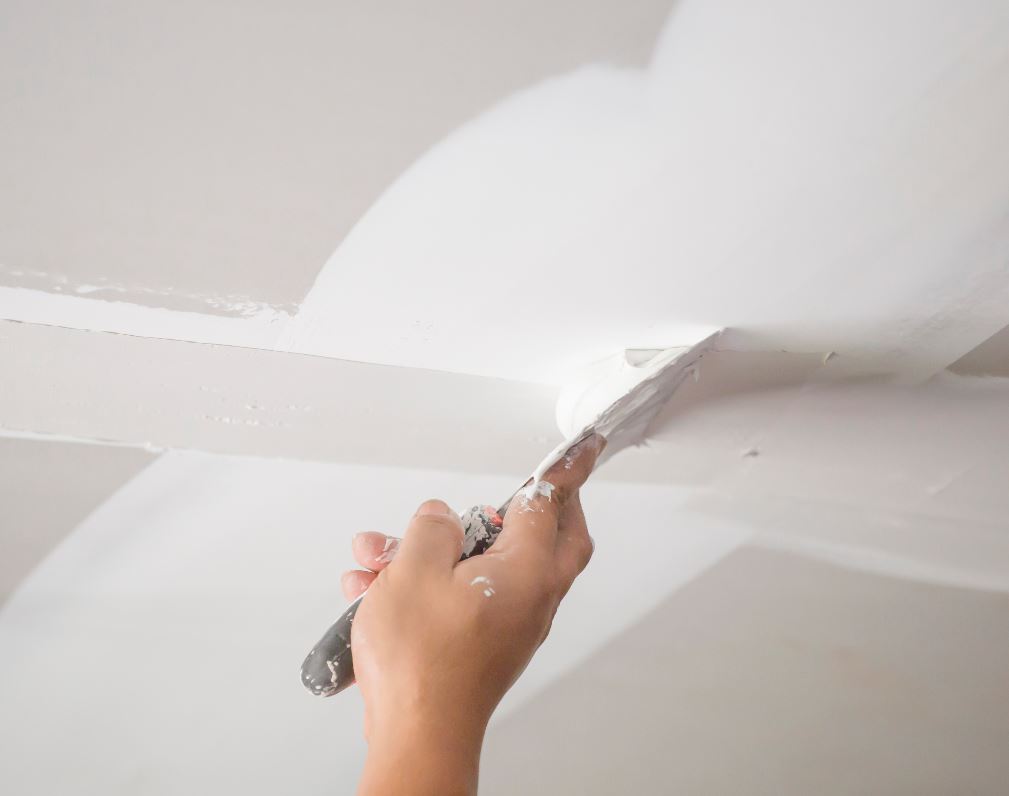A Comprehensive Guide to Mastering Drywall Fixing and Installation
This guide supplies an extensive exploration of drywall fixing and installment, accommodating both novices and experienced experts. It lays out crucial tools, methods for patching and hanging sheets, and the important finishing processes. Drywall Repair Ogden UT. By understanding usual challenges, people can attain refined outcomes. Mastering these abilities not just boosts one's home yet also constructs confidence in DIY endeavors. What foundational suggestions will guarantee a successful task throughout?
Crucial Tools for Drywall Fixing and Installation
When beginning on drywall repair work and setup, a few vital devices can significantly improve the performance and high quality of the job. A drywall blade, usually available in numerous sizes, is essential for using joint compound and smoothing joints. A taping knife is additionally essential for feathering sides and making certain a smooth surface. Additionally, a drywall saw or energy knife permits precise cutting of drywall sheets to fit any type of area.

Step-by-Step Overview to Patching Holes
Covering holes in drywall is a straightforward procedure that can restore the wall surface's appearance and integrity. To begin, the area around the hole need to be cleaned and any kind of loosened particles got rid of. For tiny openings, a simple spackle or joint compound can be applied with a putty knife. Larger holes may need a spot; a piece of drywall can be cut to fit the hole, secured with adhesive or screws, and afterwards taped around the edges. When the spot remains in area, joint compound is used over the spot and feathered bent on mix with the surrounding wall surface. After the substance dries out, fining sand is required to accomplish a smooth coating. The fixed location can be keyed and repainted to match the remainder of the wall surface. This technique ensures a seamless repair, boosting the overall look of the drywall and preserving its structural integrity.
Strategies for Hanging Drywall Sheets
After effectively fixing holes in drywall, the following action involves hanging brand-new drywall sheets to produce a seamless surface area. To accomplish this, one must start by determining the wall room properly and cutting the drywall sheets to fit. It is important to hang the sheets flat for far better structural integrity, starting from the top and functioning downwards.
Making use of a drywall lift can streamline the procedure, especially for ceiling installations. As soon as placed, protecting the sheets with drywall screws at intervals of concerning 12 inches along the sides and 16 inches in the area is essential. This assures a solid hold and decreases the threat of drooping. For corners, the sheets need to be reduced to fit snugly, permitting for cleaner seams. Ultimately, it is recommended to startle the joints between sheets to reinforce the overall framework, creating a much more durable surface all set for the next stage in the drywall installation process.
Finishing Touches: Taping and Mudding
Finishing the drywall installation involves the crucial actions of taping and mudding, which assure a sleek and smooth finish. Taping needs the application of joint tape over the seams between drywall sheets. Drywall Repair Ogden UT. This tape can be either paper or fiberglass mesh, with each kind offering special benefits. After taping, the next action is mudding, where joint compound, or "mud," is put on cover the tape and load any blemishes
Making use of a drywall knife, the substance ought to be spread out evenly, making sure a feathery side to decrease noticeable adjustments. Numerous coats are typically needed, with sanding in between each layer to achieve a smooth surface area. Careful interest throughout this process is important, as it considerably impacts the last appearance of the wall surface. With the right strategy and perseverance, completion result will certainly be a remarkable foundation all set for painting or completing touches.
Usual Errors to Avoid in Drywall Projects

One more typical mistake is not permitting adequate drying time in between coats, which can catch wetness and jeopardize the finish. Neglecting to feather the sides correctly can create noticeable lines and flaws. Skipping sanding or making use of improper strategies might leave rough spots. By understanding these challenges, individuals can greatly enhance the top quality of their drywall tasks and achieve a professional-looking surface.
Regularly Asked Questions
Can I Repair Drywall Without Expert Help?
Yes, one can fix drywall without specialist assistance. With the right tools, materials, and advice, people can effectively deal with minor repairs. Significant damages might need professional knowledge for optimal outcomes and toughness.
How Much Time Does Drywall Substance Take to Dry?
Drywall substance usually takes between 24 to 2 days to dry entirely, depending on variables such as moisture and temperature. Thinner layers may dry out faster, while thicker applications call for more time for suitable results.
What's the very best Sort Of Paint for Drywall?
The very best kind of paint for drywall is generally a water-based latex paint. It gives outstanding insurance coverage, longevity, and simplicity of application, making it ideal for interior wall surfaces while allowing for very easy cleaning with soap and water.

Exactly how Do I Protect Against Mold And Mildew on Drywall?
To stop mold on drywall, warranty correct ventilation, control moisture levels, make use of mold-resistant materials, and immediately attend to any leaks. Regular examinations and instant remediation of water damages are also vital for long-term avoidance.
Is Drywall Recyclable After Elimination?
Drywall is recyclable after removal, gave it is without impurities more info like mold, paint, or other unsafe products. Recycling facilities can refine it right into brand-new products, promoting sustainability and reducing landfill waste in construction.
When starting on drywall repair work and installation, a couple of crucial tools can considerably boost the effectiveness and top quality of the job. After successfully repairing openings in drywall, the following action includes hanging brand-new drywall sheets to create a seamless surface. Finishing the drywall installation involves the vital steps of taping and mudding, which ensure a polished and smooth coating. Accomplishing a polished finish in drywall projects can be challenging, and a number of common errors can threaten the top quality of the work. Yes, one can fix drywall without professional assistance.